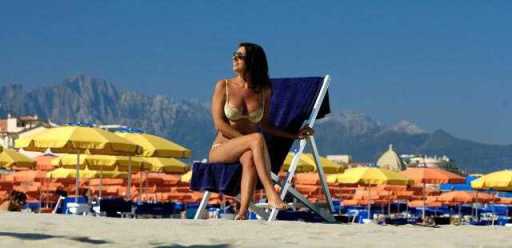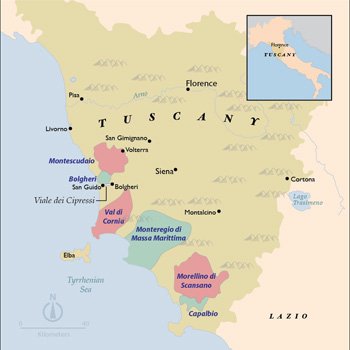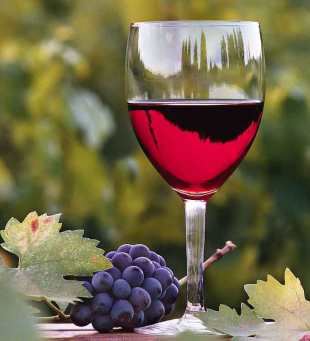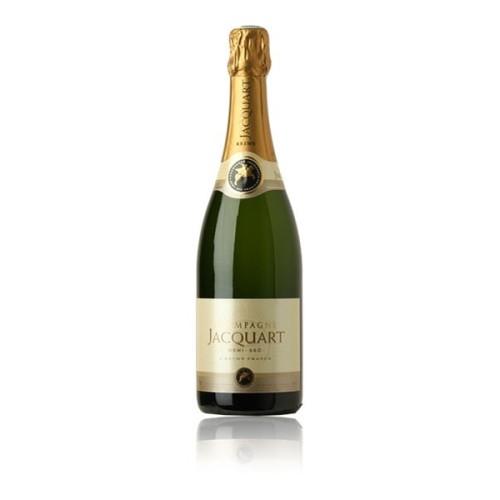Now that the land rush is subsiding, the true worth of the region’s vineyards is being reflected in spectacular wines.
The Viale dei Cipressi offers an unforgettable journey to those who travel down its path. At approximately three miles in length—with 2,000 columnar trees on either side of the gently undulating avenue—it’s said to be the longest cypress-lined road in the world.
The road cuts a route across coastal Tuscany, from the shimmering Tyrrhenian Sea to hilly brush, slicing through some of the world’s most prized vineyards along the way. The strada provinciale starts at the octagonal San Guido chapel at the shore and finishes inland, at the gates of the medieval Castello di Bolgheri.
The Viale dei Cipressi represents a cultural, historical and environmental continuum by which the entire area is measured. But in spiritual terms, this glorious passageway leads to the Shangri-La of Italian wine.
Three-quarters up the Viale dei Cipressi on the right is the 42-acre vineyard of Sassicaia, named after the many stones (sassi in Italian) that pepper its gravelly clay soils. This vineyard lends its name to the wine that fulfills the enormity of Italy’s enological promise.
“We are all children of Sassicaia,” says vintner Michele Satta, whose eponymous estate produces Cabernet Sauvignon, Syrah and Sangiovese. “It is the inspiration for all Italian wine past, present and future.”
That inspiration drives the exciting work underway in coastal Tuscany. Previously known as the birthplace of super Tuscans—a passé catch-all name for iconic wines made outside obsolete Italian Denominazione di Origine Controllata (DOC) and Denominazione di Origine Controllata e Garantita (DOCG) regulations—Tuscany’s coast now bustles with a new generation of pioneering vintners.
From concept wines without roots (like the nebulous super Tuscan category), the region’s vintners now pursue wines in tune with their geographic origins comparable to the greatest appellations of Tuscany: Brunello di Montalcino, Chianti Classico and Vino Nobile di Montepulciano.
The emphasis has clearly swung in favor of territory, territory, territory.
The 120-mile coastline that extends from the port city of Livorno to the postcard-perfect hilltop town of Capalbio is home to six wine regions, plus the island of Elba. Each possesses unique climatic and geologic conditions, grape varieties and individual wines.
Bolgheri
Ribot, according to many, was the greatest racehorse of all time. Undefeated in 16 races throughout the mid 1950s, the British-bred, Italian-trained “horse of the century” was owned by Mario Incisa della Rocchetta, of the fabled Marchesi Incisa family.
Banking on more successes, Mario created Cabernet Sauvignon-based Sassicaia in 1968 (the first commercially released vintage) in what started as a playfully competitive nudge at Bordeaux.
Since then, Bolgheri has undergone radical change. Despite the continued success of Sassicaia, the region is practically a newborn.
In 1985, there were just six producers that—like Ribot—raced to success as individual brands. Only when producers embraced the concept of territory, united behind a single Bolgheri identity, did the region hit its winning stride.




